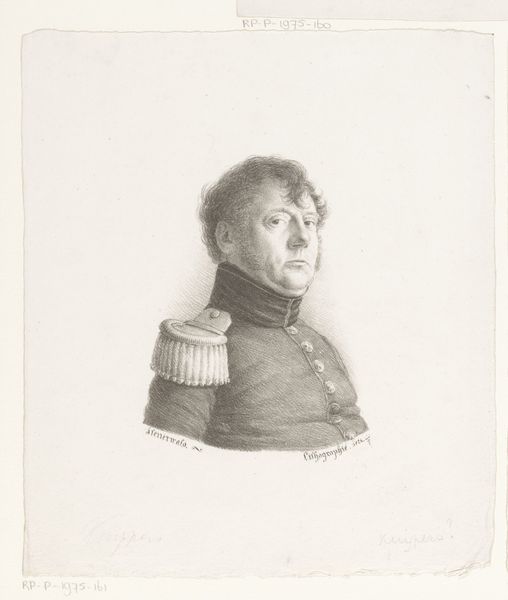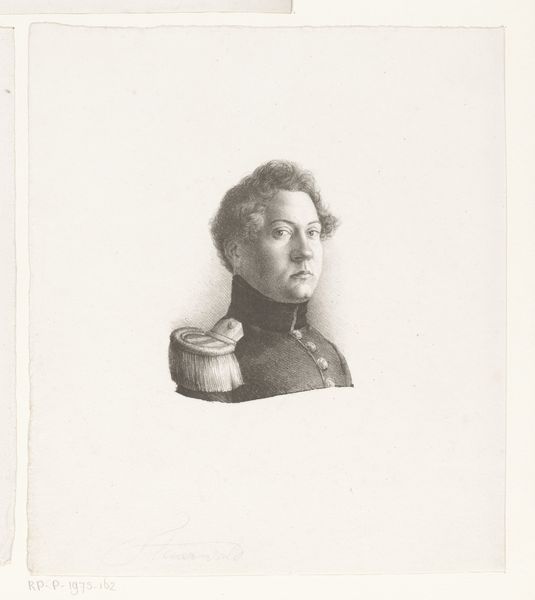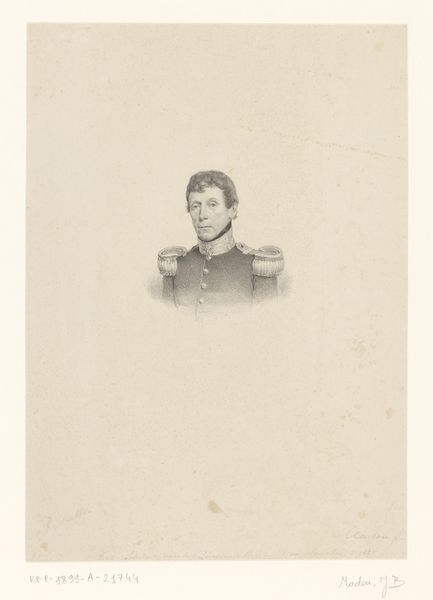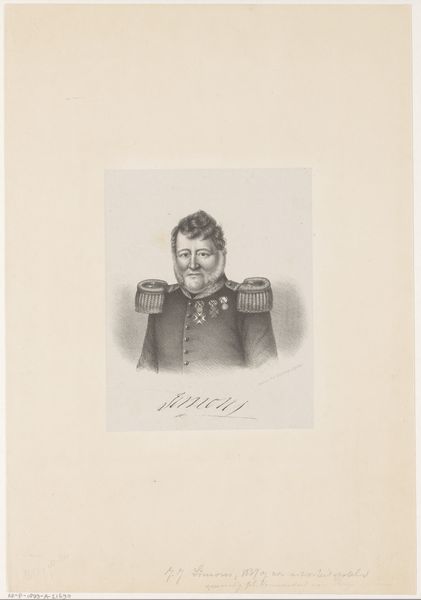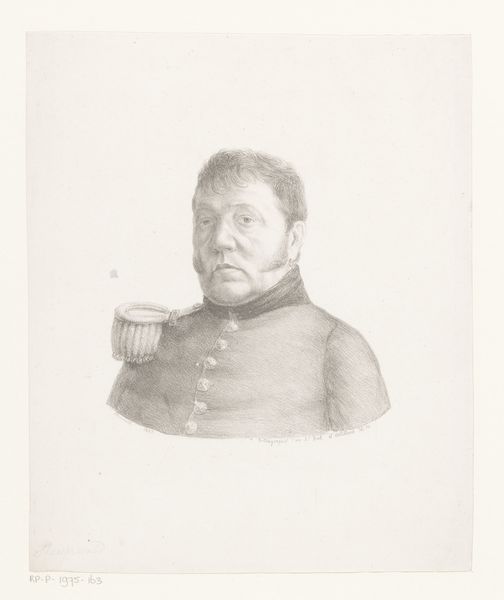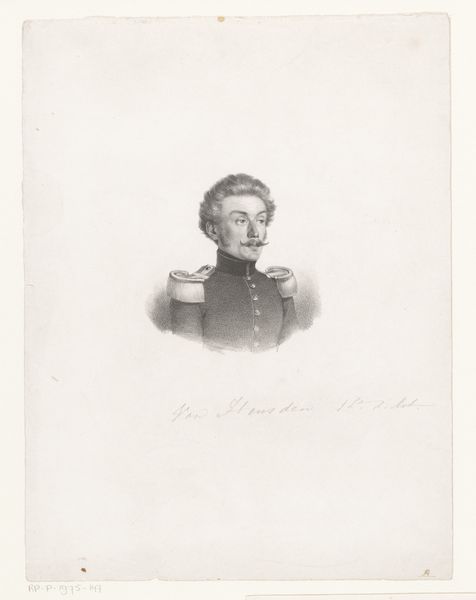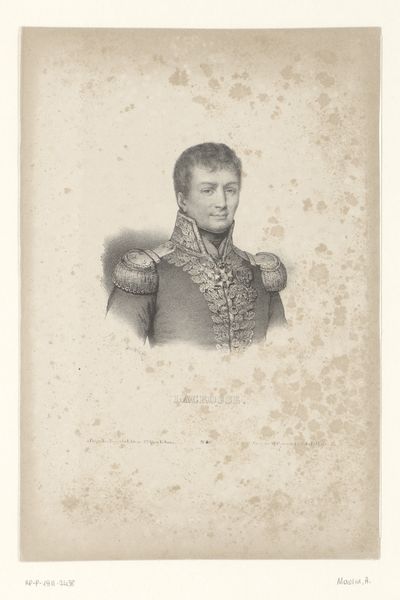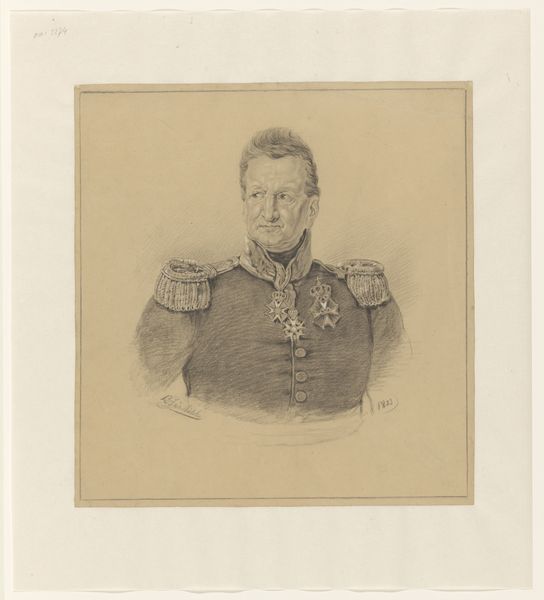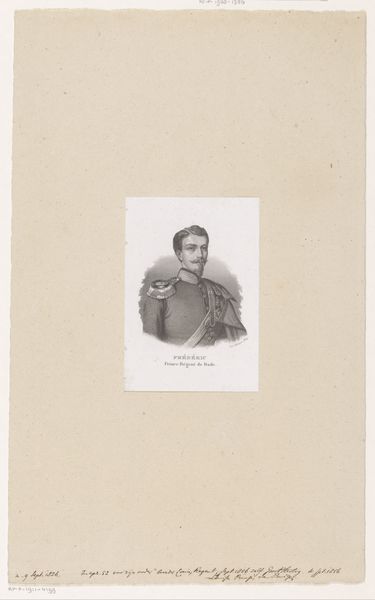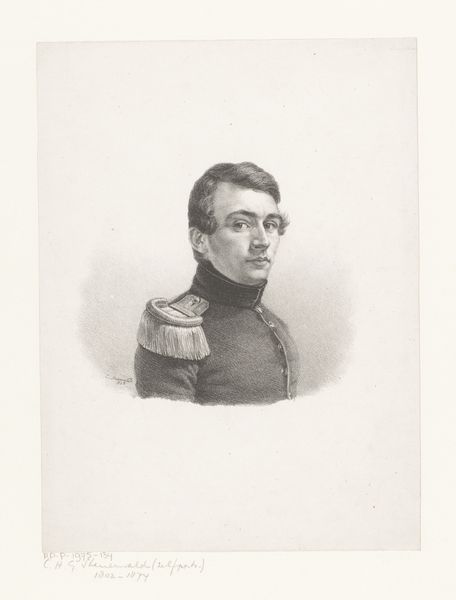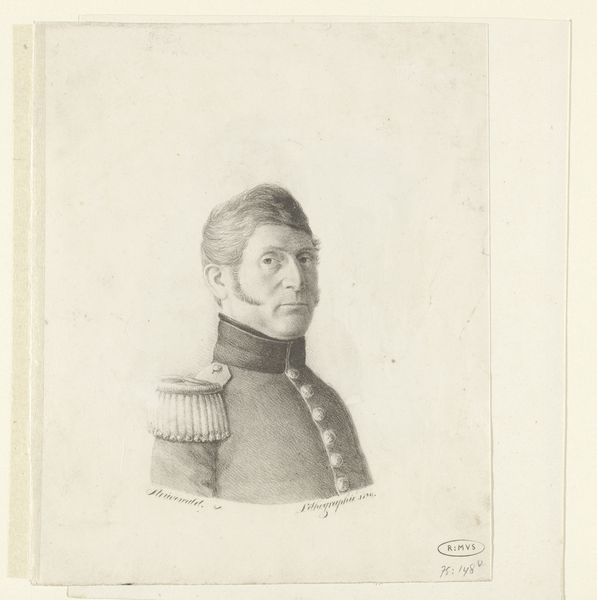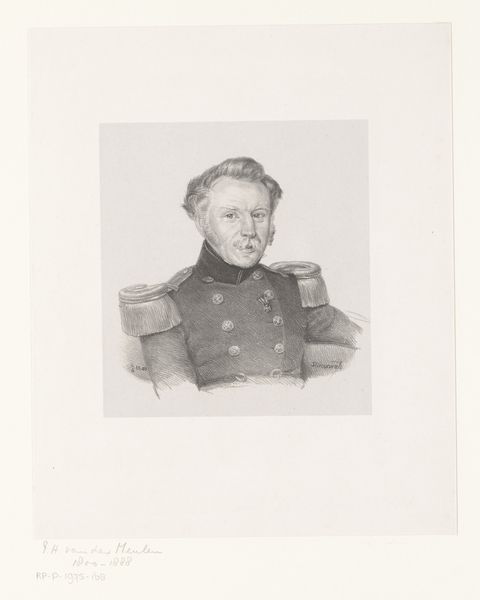
drawing, pencil
#
portrait
#
pencil drawn
#
drawing
#
pencil sketch
#
pencil drawing
#
pencil
#
academic-art
#
realism
Dimensions: height 287 mm, width 232 mm
Copyright: Rijks Museum: Open Domain
Curator: Take a look at this pencil drawing; a “Portret van onbekende militair” by Christian Heinrich Gottlieb Steuerwald. We believe it dates somewhere between 1822 and 1874. Editor: Oh, he looks like he’s seen some things. Stern, unflinching gaze. What grabs me right away is how the shading almost makes his uniform seem…substantial, almost weighty. Curator: Absolutely, Steuerwald really committed to detailing the texture and material of the jacket with meticulous rendering; notice the precision of the braided epaulettes and how they stand out. Editor: Thinking about the artist's material choices - pencil on paper – this speaks volumes to me about accessibility, the democratization of portraiture in this period, but maybe also points to something else, the social standing of the depicted character in relation to his artist's financial means... Was it maybe a way of representing someone without the costs of oil on canvas? I wonder what role this pencil played within society... Curator: I can see your point, it definitely feels like the humbleness of pencil adds another layer. The unknown identity of this figure invites projection; the drawing possesses an empathetic quality… the type of sympathetic character study often found within family albums or historical documents. His gaze projects outward towards our present and is there a little defiance hidden there as well. Editor: He is a man who probably spent long hours at work... Look at how the hatching emphasizes his jaw. But it also makes you think of labor itself - the hand of the artist working relentlessly with that pencil. Also, notice his expression which looks like a product of all the effort and commitment involved during art-making? In his day did this work become something of higher value through its materials rather than its subject? Curator: That is an astute observation. He also might have wanted something beyond art and maybe through hard work, like the production process implied here, he was making a connection to the real world… What is he really trying to say here with these subtle details? The light seems very calculated—how does the contrast affect us? Editor: It gives the piece gravitas. And those textures pull us closer. As a piece produced during an era dominated by social and artistic restrictions, I wonder about what the selection of materials implies with regards personal liberties… I want to get a hold of that pencil and retrace those marks! Curator: It's precisely that tactile invitation that makes this a timeless study of portraiture. He definitely speaks to our present condition with remarkable clarity. Editor: He really does… a beautiful way to bring together craft, social history, and character, all at once.
Comments
No comments
Be the first to comment and join the conversation on the ultimate creative platform.

